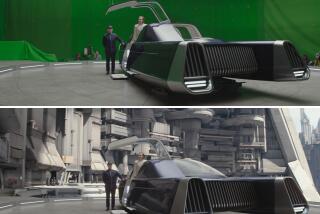The ABCs of 3-D
- Share via
It’s good to see Robert Rodriguez championing 3-D movies [“With 3-D, ‘Shark Boy’ Aims to Do a Number on Viewers,” May 8], an unfairly maligned and underappreciated art form if ever there was one, but he does his cause no favors by touting the hopelessly primitive anaglyphic format as “the wave of the future.”
By the time the 3-D movie craze of the 1950s hit -- half a century ago -- filmmakers had already discarded anaglyphic 3-D in favor of the far superior polarization process, which eliminates the color distortion inherent in red/blue 3-D and boasts a much clearer, sharper picture (which means greater depth and more realistic effects). Obviously the resurrection of anaglyphic 3-D is a matter of economics. Polarized 3-D is more expensive to exhibit, requiring special screens and projection filters, while all you need to watch anaglyphic 3-D is a cheap pair of cardboard glasses.
It’s encouraging that a talented writer/director like Mr. Rodriguez has such enthusiasm for the creative possibilities of 3-D movies, but if this really is to be the wave of the future, producers are going to have to loosen the purse strings a little to pay for the best technology available.
Blake Legge
Long Beach
More to Read
Only good movies
Get the Indie Focus newsletter, Mark Olsen's weekly guide to the world of cinema.
You may occasionally receive promotional content from the Los Angeles Times.









